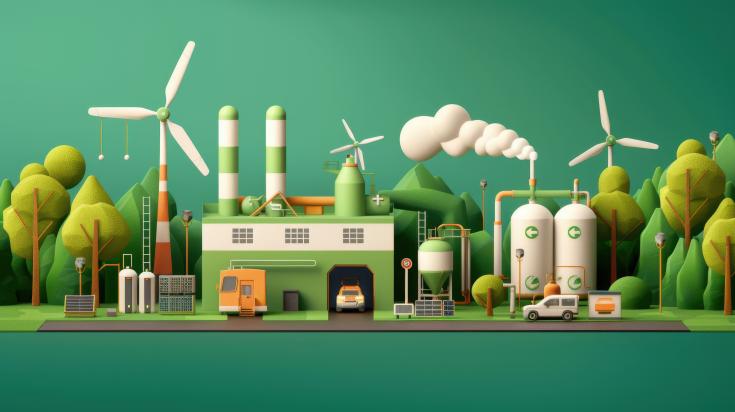Opportunities that green H2 offers for SMEs in Europe
What is green hydrogen?
Hydrogen is the smallest and simplest element in the periodic table. Despite how it is produced, it ends up with the exact same carbon-free molecule. In saying that, the pathways to create it are rather diverse, as are the emissions of greenhouse gases like methane and carbon dioxide.
Essentially, green hydrogen is hydrogen created by splitting water into oxygen and hydrogen through the use of renewable electricity. This is quite a different pathway when compared to both blue and grey hydrogen. By contrast, grey hydrogen is generally created from methane which is a primary culprit for climate change.
Blue hydrogen follows the exact process as grey but with some additional technologies to capture the carbon dioxide created when the hydrogen is split from methane. Where renewable power is the cheapest source of electricity, electrolysis for green hydrogen production requires significant scale-up and reductions to its costs.
Hydrogen has emerged as a leading option for storing energy from renewables. Green hydrogen, in particular, was featured in several emissions reduction pledges at COP26 as a method to decarbonise heavy industry, aviation, shipping, and long-haul freight.
Both industry and governments have recognised its potential and importance in a net zero economy. As a result, the adoption of green hydrogen is increasing in large corporations globally. In saying that, it is also becoming common for small and medium enterprises.
However, the need to build expensive electrolysers for the green hydrogen generation has resulted in the process being rather costly for small businesses. Therefore, for small businesses to engage in green hydrogen, cost reductions must occur that match with the other energy sources.
SMEs can create enhanced cross-sectoral applications of green hydrogen by combining sectors. In saying that, when you consider the above, it is still essential for a sustainable energy policy ecosystem for green hydrogen to be created for SMEs.
This can be done by subsiding the cost differential between fossil fuel cost and green hydrogen production. Additionally, duty-free import of plant technologies and machinery for renewable energies. Improvement in the performance and cost of the hydrogen supply chain on a bigger sale should also be acted upon.
The above actions will help SMEs engage in the green hydrogen ecosystem most efficiently. As mentioned, green hydrogen is an essential pillar of the energy transition, but it is not the next immediate step. We first must accelerate the deployment of renewable electricity to decarbonise our existing systems.
Moreover, we need to accelerate the electrification of the energy sector to create low-cost renewable energy before finally decarbonising sectors that are challenging to electricity through green hydrogen. Currently, we produce significant amounts of grey hydrogen, so the priority is to begin to decarbonise the existing hydrogen demand. (https://instituteofsustainabilitystudies.com/)
